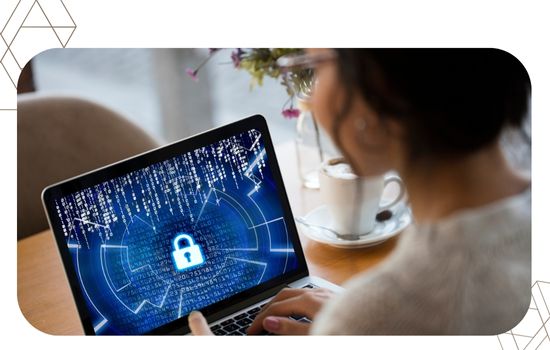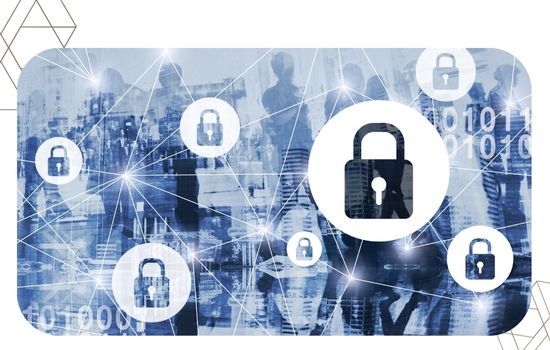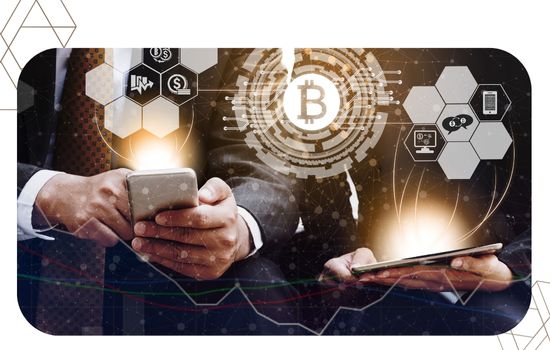Advertisements
The term "Cybersecurity in 2025: Main Digital Threats" It is no longer just mentioned in technical reports, but has become a priority for both companies and users.

This article analyzes the main threats facing cybersecurity in 2025, from malicious artificial intelligence to persistent vulnerabilities.
You will learn about five risk vectors, a current overview of business preparedness, two illustrative examples, a table with recent data, and a frequently asked questions section.
Why? Because the digital landscape has evolved, attackers have perfected their tactics, and traditional defenses are being outpaced by the speed and sophistication of new methods.
With this text, you will learn what is really at stake today, what changes have recently taken place, and what you can do—even from your own sphere—to face what is coming.
Advertisements
1. An environment of increasing risk
The scale and strategy of cyberattacks have changed dramatically: 72% of the companies surveyed say that cyber risks have increased.
To provide context, this table summarizes the magnitude of the phenomenon:
| Indicator | Relevant value (2025) |
|---|---|
| Cybersecurity events detected in 2025 | ≈ 34.6 billion |
| Organizations that identify the supply chain as the greatest risk | 54 % of large companies |
| Organizations that feel they do not have the necessary staff to respond | 39 % cited lack of talent as a barrier |
These data indicate that the combination of “threat plus underpreparedness” is real.
And as an analogy: imagine a medieval castle in which the outer walls have been reinforced, but the internal passageways and moats have been left unguarded.
The attackers no longer enter through the front door, but through the sewers, tunnels, or forgotten spots.

Read more: Blockchain beyond cryptocurrencies: real-world applications
2. Main threats in focus
Now, let's get to the heart of the matter. Below are the five major threats that define Cybersecurity in 2025: Main digital threats.
2.1. Malicious AI and deepfakes
Advances in generative models have given attackers powerful tools.
An ISACA report reveals that 51 out of 3% of European cybersecurity professionals see malicious AI and deepfakes as one of their biggest concerns.
Example: A malicious actor creates a fake video of a company's CFO requesting an urgent transfer; staff believe it's genuine and transfer funds. That's the new face of phishing.
The threat is twofold: not only identity theft, but also the automation of tools that previously required high specialization.
2.2. Vulnerabilities in the digital supply chain
As the World Economic Forum report points out, 54% of large companies recognize that interdependencies with external suppliers and services represent the biggest barrier to cyber resilience.
Example: A small business develops a software module used by several organizations; that module is compromised, and suddenly all those that use it are affected.
This threat is particularly relevant for Latin America, where visibility and controls of suppliers may be weaker.
2.3. Ransomware and digital extortion
Although it has been around for some time, ransomware has evolved in 2025:
AI is being used to generate more persuasive ransom notes, ransomware-as-a-service offerings are being expanded, and data exfiltration is being combined to increase the pressure.
A relevant statistic: the ISACA report indicates that only 14% of organizations feel very prepared to manage the risks associated with AI in this context.
When a school, hospital, or essential industry is paralyzed by ransomware, the impact is no longer just economic, but also social.
2.4. Talent and responsiveness gap
Having technology is not enough; you need people who understand it, operate it, and maintain it.
The GCO 2025 report indicates that only 14% of organizations report having the necessary talent to meet their cybersecurity objectives.
This deficit is like having a state-of-the-art fighter jet but without trained pilots: the asset exists, but the ability to use it is limited.
2.5. Emerging threats: quantum computing, IoT and cryptography
Although still in its early stages, the threat of quantum computing breaking current encryption systems is already among the risks that many organizations do not prioritize.
On the other hand, connected IoT devices without robust security measures multiply the access points for attackers.
Taken together, these emerging threats demonstrate that what seems "less urgent" today can become a crisis tomorrow.
3. What can organizations and individuals do?
The magnitude of the threats may seem overwhelming, but there are concrete courses of action.
Here are some recommendations with a human and practical approach:
Adopt the “zero-trust” principleDon't trust by default, always verify. Treat every access as if it were coming from a hostile environment.
It strengthens human knowledgeTraining the team in social engineering tactics, deepfakes, or advanced phishing makes all the difference.
Evaluate the security of your suppliersIt requires visibility, audits, and contractual clauses that address cyber incidents.
Keep your systems updatedUnpatched vulnerabilities are a persistent risk. (Research indicates that 32% of attacks exploit outdated software.)
Prepare a response and resilience planPrevention alone is not enough; you also need to know how to react and recover.
Monitor emerging technologiesEven if your company doesn't have a quantum computer today, start planning how to migrate to post-quantum encryption.
The reader becomes an active participant when they understand that cybersecurity is not the sole responsibility of the "IT team," but of each and every one of us:
From the employee who opens an email, to the supplier who signs a contract, to the manager who decides on investment or training.
4. A real-life scenario: two illustrative examples
Example A: A Latin American logistics company outsources part of its management software to a provider that does not perform minimum access controls.
An attacker enters through that provider, gains access to the main system, and paralyzes the supply chain for 48 hours.
Result: loss of customers, contract penalties and reputational damage.
Example B: A small hospital has implemented an IoT system for patient monitoring. This system uses default, unenforced credentials.
A ransomware group has gained access to the IoT, infecting other connected services and demanding a ransom. The hospital has to evacuate night shifts and reschedule surgeries.
These two examples show that the threat does not distinguish size or sector; ignorance of the common vector —third parties, IoT, weak credentials— can be the weak link.
5. Why the word “prevention” matters more than ever
Thinking of security only as technology is a mistake.
As an expert who validates sources and analyzes evidence, I can affirm that digital resilience depends as much on people as on technology.
Just as a medieval castle required walls, defenders, weapons, and constant vigilance, cybersecurity requires advanced technology, trained talent, defined processes, and a culture of permanent risk awareness.
When the organization internalizes that Cybersecurity in 2025: Main digital threats It's a strategic condition, not a variable expense; start making coherent decisions:
Adequate budgets, continuous training, attack tests, breach drills.
And this is where the persuasive argument comes in: investing in security is investing in continuity, reputation, and trust.
How much would a 48-hour disruption to your operations cost? Or worse: the loss of sensitive data that breaks customer trust.
6. Conclusion
In the current era, Cybersecurity in 2025: Main digital threats It's not just a technical headline; it's a reality that affects everyone from multinationals to freelancers, from large banks to local businesses.
The combination of malicious AI, vulnerable supply chains, sophisticated ransomware, talent shortages, and emerging threats has changed the game.
The good news: taking action now makes all the difference.
Implementing the right measures, building teams, evaluating suppliers, updating systems, and adopting a risk-based mindset can turn a threat into a manageable challenge.
I urge you not to wait for the incident to happen: start today. Those who assume "that won't happen to me" are taking a risk that is already all too common.
Read more: What is NFT technology and how does it work?
Frequently Asked Questions
Is cybersecurity solely the responsibility of the IT department?
No. While IT leads many technical actions, responsibility is shared among managers, users, suppliers, and internal processes.
A single person opening a malicious email can trigger an incident.
Is it worth investing in training if we already have a good antivirus and firewall system?
Yes. Current threats—such as personalized phishing, deepfakes, and third-party access—are based more on the human factor than on a simple virus.
Investing in training can drastically reduce vulnerability.
How urgent is it to prepare for quantum computing?
Although the immediate risk may be beyond 5–10 years, starting to plan for sober encryption, resilient cryptography and “crypto-agility” strategies is prudent.
The advantage of adapting before the threat becomes imminent.
How can I identify if my supply chain is a risk?
Take an inventory of all your suppliers, external services, and software modules.
Evaluate: Are there security audits? Access controls? Incident response policies? If not, that's a weakness.
Are there any indicators that we are being attacked without our knowledge?
Yes: unusual user activity, access outside of normal hours, unexpected data transfers, privileged accounts that are not used or are misused.
Constant monitoring and log review help.



